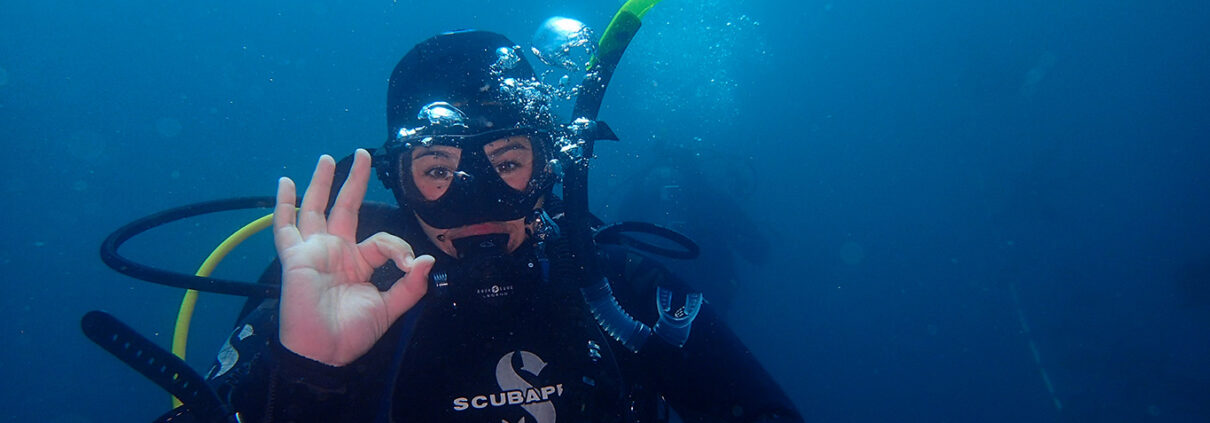I started as more of a generalist at McGill University in Montréal, studying environmental biology. Having always had a passion for oceans and marine biology – I was lucky to do several field internships studying coral reef conservation in Indonesia. After graduating I took an internship on Catalina Island working in the field of education and outreach. At that point I was aware of the nexus of science and policy but wasn’t sure what it was, so when applying to graduate school, I chose a professionalMaster’s program at CSU Monterey Bay focused on technology, policy and science communication. That actually led directly to my 2018 CSU COAST internship with OST, which was probably the turning point? It was so exciting, getting to see exactly what goes into science advice and being part of a small organization that was so nimble and responsive and wore so many hats. There was just something new every day, and understanding that it’s about using the right science – the most applicable as well as the best, not just the newest or the most peer-reviewed. Science advice, which is one role OST plays, has parallels to science education and outreach, and I get to use my scientific training to find very practical solutions to issues faced by California’s coast and ocean.
A series spotlighting OST's position at an evolving science-policy interface
By Emma Stone
March 14, 2022Tell us about your journey to a career at the nexus of ocean and coastal science and policy - what was an unexpected turn that brought you here?
What was one of the formative moments in your career? How does it continue to impact your current work?
Probably the project I started on with my internship, working with the Ocean Acidification and Hypoxia (OAH) Task Force on the California Ocean Acidification Action Plan. For me, it was all about understanding the different roles that each partner – the Task Force, Ocean Protection Council, OST and others – played to produce a single piece of practical advice. That project started (before me) with “let’s better understand OAH causes and impacts” and by the time I joined it was “OK, what do we do with these findings” and then “how can we create and implement policy around it?” By the time of my internship the project was taking the California Ocean Acidification Action Plan strategies and identifying science needs to support these goals. A lot of what we did was facilitating discussions between the Task Force experts and OPC, acting as both a communication medium as well as actively contributing to the plan. It really came down to understanding the lay of the land and coordinating the key players.
What are some rewarding or challenging aspects of OST's mission driven work as a boundary organization?
It comes back to delivering the most applicable science advice, not just the “best”. And that needs to be truly representative of California’s diversity of experiences, perspectives, and impacts. Diversity, equity, and inclusion has become such a topic in the last two years but we need our internal values to be at the core of our external work – explicitly, not implicitly. Embedding DEI in everything we do has to be a priority, but that is its own challenge. We’re trying to build these relationships with individuals and organizations we haven’t been as involved with previously – social scientists, tribes, grassroots and local organizations, etc. Some of our more recent projects have focused on bringing those voices together but now it becomes a question of keeping them involved in future projects and fostering these relationships. This increased breadth of knowledge and experience brings so much to the science advice process, highlighting concerns, ideas, solutions that might not have been previously considered.
Can you speak more about those recent projects? Do you feel they're more representative of OST's vision and mission
Our Diversity Equity and Inclusion (DEI) in Ocean Sciences initiative has definitely been a good way to get started on this pathway to being genuinely inclusive. It has helped tackle this issue of who is available to us as an expert, and has been a great space for us as an internship/fellowship host and early career pathway. We also have a unique placement as the initiator of these bridging conversations because we don’t stand to gain a tangible benefit – it’s all in the relationships. We sit outside of and between these silos of expertise and experience and if we can help connect them, everyone benefits. As for applying that to other projects, it gets complicated. We’ve learned so much convening the Roundtable discussions as part of this initiative, however, they were closed off spaces for valid reasons, to continue to reach out to some of these communities and beyond, we need to show commitment and intentionality – and I think we have.
Our commitment to this project has shown we are willing to do this work, it helped us build relationships with the key DEI leaders in academia and in the broader ocean science community. It also showed us there’s so much we need to learn around developing safe spaces for difficult conversations, and how much we need to keep building relationships with community organizations. The value is in the people – I think that’s the main takeaway from the whole experience. All of it can be applied to other projects, it’s just a question of implementation. How do we keep DEI and environmental justice at the core of what we do? It needs to be a foundational species in OST’s ecosystem – something that we could continue to function without, but would leave everything else hollow. Because we can’t support graduate education without being part of the culture change, and we can’t provide the best science advice if our experts aren’t as diverse as the people policymakers are trying to serve.




